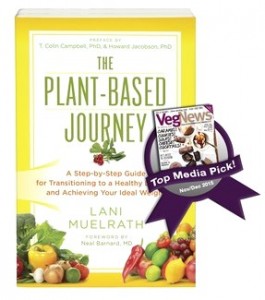 I’ve just returned from a weekend retreat on Mindfulness and Self-Care that I co-hosted with friends Allison Rivers Samson and Lisa Levinson.
I’ve just returned from a weekend retreat on Mindfulness and Self-Care that I co-hosted with friends Allison Rivers Samson and Lisa Levinson.
Held at the beautiful and restful Banyan Grove in Forest Knolls, California, the retreat was filled with mindfulness meditation practice, walking meditation, and restorative yoga (taught by yours truly), self-care and fitness fusion via NIA by Allison, and healing circles by Lisa. Though the retreat wrapped a few days ago, the love lingers on and each day I quietly thank each person in attendance for this wonderful opportunity.
We also got a chance to hike in the nearby redwoods of the Northern California coast, and to enjoy catered vegan meals prepared by two Japanese chefs who delighted us with Japanese cultural specialties.
At the final mindfulness session of the retreat I wanted to leave attendees with some simple tools for bringing more mindfulness into the day. The value of this is an increased sense of presence – really living your live as you are living it. This has multiple benefits – decreasing wandering mind (which can lead to immersion in the default mode network and excessive rumination which hooks other neural activity in the brain such as obsession, cravings, addiction, sadness, depression – I write about it all and include the research in The Mindful Vegan book).

Being more mindful and present during the day – which means doing what you are doing while you are doing it more often – cultivates positive brain states such as happiness, joy, compassion, and ease. Who of us doesn’t want that?
Here are eight simple tools that I shared at the retreat, and that I promised attendees I would post here for easy reference. These are simple strategies you can employ every day to help bring you out of wandering, distracted mind and into the present.
- Slow down. In these days of do-more-faster, this can seem like a tall order, can’t it? The media, technology, and pace of living all ask us to be more productive. All this rushing about to get more done is leading to – what? The habit of doing more and more until our lives are over. I invite you to look beyond productivity – in the general sense of the term – to what we value even more – the sense of well-being that comes from being present with our tasks and deep satisfaction of a job well done with integrity, kindness, and in alignment with our ethical ideas. Productivity in the greater sense of the term. Not just about getting stuff done.
- Try to do one thing at a time; reduce multi-tasking. Related to #1 – slow down – we now know that truly, aside from the autonomic functions like breathing, our brains can only do one task at a time. Multi-tasking actually means you are mentally jumping from one thing to another to another. Often times this means that everything that gets done has compromised quality. And we all know the feeling of mental whiplash that multi-tasking leaves us with. Research shows that people who multitask all the time can’t sustain their attention, even when they shut off all their devices. Training yourself in mindfulness might be the answer.If it seems to daunting to go cold turkey on doing one thing at a time all day every day, start by selecting specific times or activities of the day where you set the intention of not multi-tasking and focus on simply doing what you are doing while you are doing it.Let me give you an example from my own experience. I recently noticed that my morning java was becoming habitually accompanied by getting a start on the day’s tasks, such as checking in with my online students or correspondence. Yet I love those early morning moments of just me and my steaming mug. So I decided that I would instead simply enjoy my morning drink with full attention. This is a very enjoyable, steading ritual that makes a difference in my day by keeping me focused on and savoring one activity from the start.
- Become aware of the breath during activities. The breath only takes place in the present moment. “You can’t breathe for tomorrow, or yesterday, for that matter.” (The Mindful Vegan, pg. 46). By becoming aware (mindful) of the feel of the breath coming into and out of your body you bring yourself right into the present moment. This is a simple and effective way to bring yourself out of wandering mind and being lost in thought, which if left unchecked can lead to sadness, depressing, obsessions, cravings, and a whole fleet of other mental states that create difficulties.
- Relax into a feeling of calm presence with others. Calm, equanimity, compassion, kindness, joy, ease, happiness – all of these states are endogenous to us. That means they are right there in your brain. You don’t have to go anywhere or do anything to get them. By developing the skill of dropping beneath the agitation on the surface of the mind, as you do with mindfulness training, you learn to tap more easily into this mental space.
- Use routine events – e.g., phone ringing -to implement the S.T.O.P. Strategy to restore mindfulness. Remember, it only takes about five seconds.
- At meals, savor every bite and eat more slowly when you can. Only once in my life have I had someone tell me that they have a problem of eating too slowly. For most of us, racing through meals or piling one bite in after the next is the norm. As you live more mindfully, you eat more mindfully. By slowing down, you enjoy your food more while inviting yourself to tune in more closely to hunger and fullness signals. Sometimes this means – as reported by Anderson Cooper in this 60 Minutes Report on Mindfulness – you eat less, while enjoying it more.
- Simplify life; give up lesser rewards for greater ones. For example, the greater reward of simply enjoying your morning hot beverage (as in #2 above) may not deliver the reward of getting a lot of things done in that particular time frame, but it can deliver a quiet and presence to the start of your day that has a ripple effect. Lounging in bed an extra ten minutes may give you the reward of luxuriating under the covers, but this can pale in comparison to taking those few minutes to do some mindfulness practice or do some yoga, stretching, or take a short walk before you continue with your day.
- Do formal practice. All of the above are infinitely easier to implement with a foundation of formal practice. Formal practice means that you protect a period of time and space each day to engage in mindfulness meditation practice. If you wait until the heat of the moment to try to navigate the stress of life’s ups and downs without some formal practice time, it can be like trying to run an Olympic race without training. The benefits of mindfulness meditation practice are dose respondent – the specific form of mental training that comprises formal practice can be downloaded into daily moment-to-moment benefit. Building the connection and inner reserves make a tremendous difference.
Take an honest look at this list and see where you might be able to most easily bring more mindful presence into your day. Start there.
May your days be filled with greater ease,

P.S. Here are some meals snapshots from the retreat! Top to bottom: assorted sushi, chocolate buckwheat mousse with blueberries, and tofu quiche.






